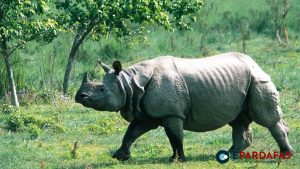
Check assaults on earth to ensure sustainable future

The world is advancing the fourth industrial revolution at present. Since the very launch of the Industrial Revolution, the exploitation of the planet Earth began, and it gradually gained intensity. When the assaults crossed limits, human beings, and other organisms are witnessing environmental to climate catastrophes now.
In the wake of multiple devastations beyond borders, the wisest organisms- human being- is forced to ponder the future. How long the earth will remain livable is a burning concern. It is indeed an age of existential angst.
Needless to say, the land and water are the sources to survive the entire world of plants and animals. Development took pace with the use of these resources, but the exploitations in recent centuries took a toll on us. The exploitation is directly linked to material prosperity, which is in a plethora to some, while a dire need for many others’ daily living. It is indeed an age of rising contradiction and development divide.
The world is univocal and the activities of the developed, rich, and emerging economies are in the front to fuel the pollution and exacerbate climate crises. The least developed, the developing ones and the under-resourced are crying for technical and financial assistance to cope with the tragedy. The negotiations are going on in the regional to global debates spurred for some decades, but concrete results to slow the doom are awaited. At the same time, the discussions count to some extent, for they help make those blighting the earth accountable. It is therefore the age of owning up the responsibilities.
National disasters
The countries like Nepal are for environmental and climate justice, as they are suffering much from the vulnerabilities. Despite a negligible role on environmental and climate disasters, Nepal has witnessed horrible incidents that deserve national and international attention and engagement, for these are global phenomena.
As we are observing World Environment Day today, there are spurt of stories and opinions on concerns, chaos, and cries relating to environmental degradation.
Going through some stories within the country, the wetlands and grasslands in the Chitwan National Park turned dry, posing water scarcity to the birds, animals, and plants. A news story at RSS further stated that efforts were made to install a deep boring to draw water for the parched park. Doesn’t this story warrant attention as the water sources go dry inside the forests?
Information Officer at the Park, Ganesh Prasad Tiwari, shared that wild animals began marauding in the nearby human settlements in search of drinking water.
Similarly, another story from Baglung district read that four lakes in the district began drying up. The locals shared the plight that the lakes lost 40 percent of water in recent times.
Gopal Baral, a reporter for RSS from Mohottari, a district in the southern plains of Nepal, wrote that the women folks were compelled to stay vigil throughout the night to fill up jars for drinking water.
“For three days, the tap in our locality stopped running. However, I was lucky that there was a running tap last night,” said a local Phulmaya Magar from Om Shantichowk of Bardibas-2 in the district.
A few days back, the record high temperatures in different cities including the federal capital Kathmandu itself, and the record high pollution here were media headlines.
Desertification of Chure is a pressing concern
The harrowing stories do not stop. Four days back, a campaign of women from Saptari district arrived in the federal capital, Kathmandu, all with blistering feet. The campaign devoted to the ‘conservation of Chure and forest’ had the women committed to prodding the federal government. They came all after a 25-day walk. They demanded the government that it became more serious about curbing the fast desertification of the Chure region.
These are some of the stark reminders we have in our own country. These are the results of the assaults on Earth- though little as compared to the global scale. The desertification of Chure region has a link to the dry water taps in Saptari. Deforestation and illegal mining in the Chure region once went unabated, which resulted in the present panic.
Whether the governments would pay heed to these cries and crises is awaited to see in their responses. It is also the reality that owing to constraints including finance and fragile topography, Nepal is obviously bearing additional and disproportionate burdens to cope with climate and environmental crises. It has been substantiated by several national and international documents as well.
In addition to pointing out the reality behind the global tragedy and accountable factors, Nepal can not avoid its own responsibilities. We can also pay special attention towards efficiently utilizing the available resources, skills, and knowledge to mitigate climate impacts and environmental impacts. From land to forest and water management, we can evaluate our past, correct mistakes, and launch activities that help minimize environmental threats.
Forward local initiatives
In this connection, forest management is one measure. It can be linked to employment generation and poverty reduction with the use of indigenous skills. Forest is a reliable source of raw materials for handicraft products. According to the Federation of Handicrafts Associations of Nepal (FHAN), handicraft sector generates Rs 12 billion annually to the country by creating employment.
The handicrafts industries not only produce gift items and trinkets but also the utensils and gizmos used daily at home, office, and restaurants. For example, bamboo can be used to produce plenty of items to replace plastic goods which are taking a toll on our health. Similarly, the other soft and hardwoods are good raw materials for other items such as vase, jar, tub and bucket. Production, marketing, and smooth supply of handicrafts made from straw, wood, and bamboo not only discourages plastic use but also save us from health hazards. Plastic is one of the grave pollutants which must be discouraged.
Leverage tech and indigenous knowledge
Some developed countries have begun tackling pollution using cutting-edge technology like artificial intelligence. At present day of tech deluge, technology must not be left as a dry business to be handled only by the computer geeks, but made a multi-stakeholder arena where burning issues as environmental and climate crises can be dealt with it. So, Nepal can evaluate the progress in IT in the country and mull whether IT entrepreneurs and AI scientists can join hands with governments to sort out the environment problem.
Similarly, Nepal is a home to indigenous communities with rich skills and knowledge transferred over generations. Such knowledge and skills can be utilized together with technology, which requires togetherness of rural villagers and technologists. For realizing it the local governments can be the best facilitators.
It is said it is also a time to adopt ‘collective intelligence’ which is an approach to blend traditional practices with modern technology to seek sustainable solutions to the crises caused by environmental degradation and climate catastrophe.
Do politics for saving environment
In Nepal, it is appalling that when the political situation takes an unfavourable turn or goes against partisan interest, there are campaigns and demonstrations. Political leaderships themselves call their rank and files to take to the streets, but they have never called for environmental conservation. Political campaigning to mitigate environmental and climate crisis can bear huge significance for a country like ours. However, such gross apathy is to exacerbate the situation.













Comments